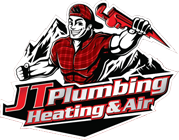What Are Some Energy-Efficient Plumbing Solutions?
As environmental concerns become increasingly prevalent, it’s important to consider ways in which we can reduce our energy consumption and minimize our carbon footprint, especially in homes and in plumbing systems. By making a few simple changes to the way you use and maintain plumbing systems, you can significantly reduce energy usage, lower utility bills, and contribute to a more sustainable future for Fort Collins, CO. Here are some of our suggestions:
Replacing Your Water Heater
One of the easiest energy-efficient plumbing solutions today is a new water heater. A standard tank-style water heater is the most inefficient way to heat your water today. The average household uses about 64 gallons of water per day, which can lead to average yearly costs of $400 to $600. If your heater is over ten years old, it is even more inefficient, using up more water, and costing you more money. Consider getting it replaced with a more efficient model, such as a heat pump water heater, a tankless water heater, or a solar water heater. For example:
- Tankless water heaters
Tankless water heaters are also known as on-demand water heaters, cleverly named for their ability to heat water only when needed, eliminating the need for a storage tank. Tankless water heaters work by heating water directly as it flows through the unit, providing hot water as you need it. These water heaters are energy efficient, as they completely eliminate standby heat loss found in traditional tank water heaters, which means a lower energy bill for you and a longer lifespan for your water heater.
Installing Water-Saving Plumbing Fixtures
Another effective energy-efficient plumbing solution is installing plumbing fixtures that save on water usage. Adding such fixtures to your plumbing can reduce the number of gallons of water you use per day, which can add up to significant cost savings as there is less water that has to be heated. It might also be advantageous to add a recirculation pump to counteract the fact that the lower water pressure means slightly longer wait times for hot water, which can make these fixtures even more energy-efficient for your home in Loveland, CO. Some options include:
- Low-Flow Faucets
Low-flow faucets are designed to conserve water by limiting the flow rate to a maximum of 1.5 gallons per minute (GPM), whereas traditional faucets can use up to 2.5 GPM. There are two types of low-flow faucets: aerator-based and laminar-flow-based faucets. Aerator-based faucets add air to the water flow through a mesh screen, creating a consistent stream of water while reducing the flow rate. Laminar-flow-based faucets, on the other hand, produce a non-aerated stream of water that is suitable for washing hands and filling glasses. Both faucets reduce water flow while maintaining good water pressure, which can save you up to 30% of the water used by traditional faucets, eliminating water waste and helping in your conservation efforts. You’ll also save money on water bills and energy bills, in addition to reducing your environmental impact.
- Dual-flush toilets
Dual-flush toilets offer two flushing options: a full flush and a half flush. The full flush is used for solid waste, while the half flush is used for liquid waste. This reduces water consumption by flushing the appropriate amount of water needed for each flush, saving up to 67% of water used by your toilet. There are two types of dual-flush toilets: gravity-fed and pressure-assisted. Gravity-fed dual-flush toilets use gravity to flush waste, while pressure-assisted toilets use compressed air to flush waste more forcefully. Both will not only save you money on water bills, but also reduce carbon emissions and mitigate impact on the environment.
We can easily install these water-saving and cost-saving features and fixtures in your Northern Colorado home so you can receive immediate benefits in your home and wallet – contact us today!








